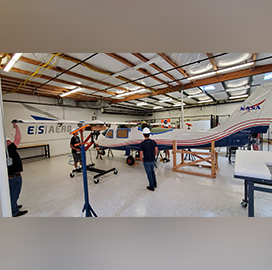Schuyler Moore, chief technology officer at U.S. Central Command, highlighted during a press briefing held Wednesday at the Pentagon the need to speed up the delivery of artificial intelligence, unmanned systems and other emerging technologies into the hands of warfighters amid rapidly evolving threats.
“And so what that means from a combatant command is that we’re really focused on technology experimentation and what that can look like to create sustained capability, and we believe that a combatant command is the right place for that because it is so critical to get these technologies into the hands of the person that uses it, in the place that they will use it, and against the threats that it will actually face,” said Moore, who was named CTO in October.
Moore responded to a question on how the command integrates AI into its combat operations in the Middle East.
“We are very mindful and continue conversations with the policy team at all times about what the exact limits of what we can and cannot do in theater are for that,” she told reporters. “Where we’re really heavily integrating A.I. is into historical looking data, so that we understand the patterns of life that are happening in the region.”
She explained how CENTCOM uses AI to help inform the decision-making process and discussed technology development work at the Army’s Task Force 39 and the Navy’s Task Force 59.
Moore was joined by Army Sgt. Mickey Reeve, who talked about his counter-unmanned aircraft system training software.











